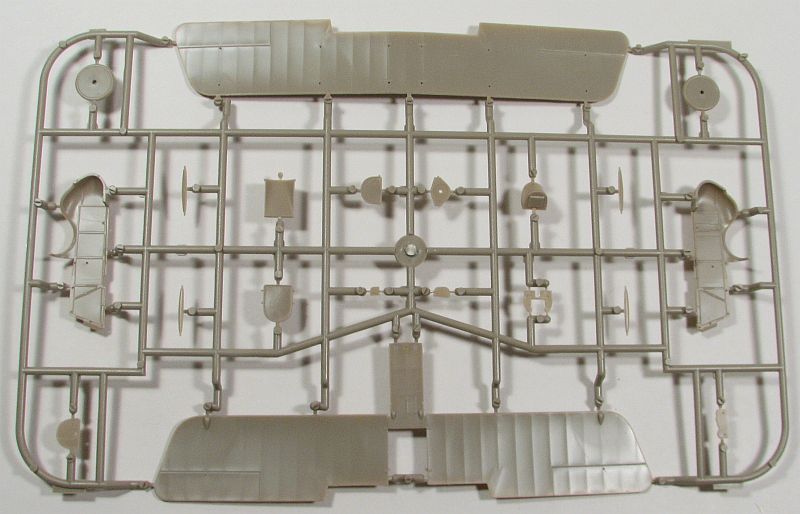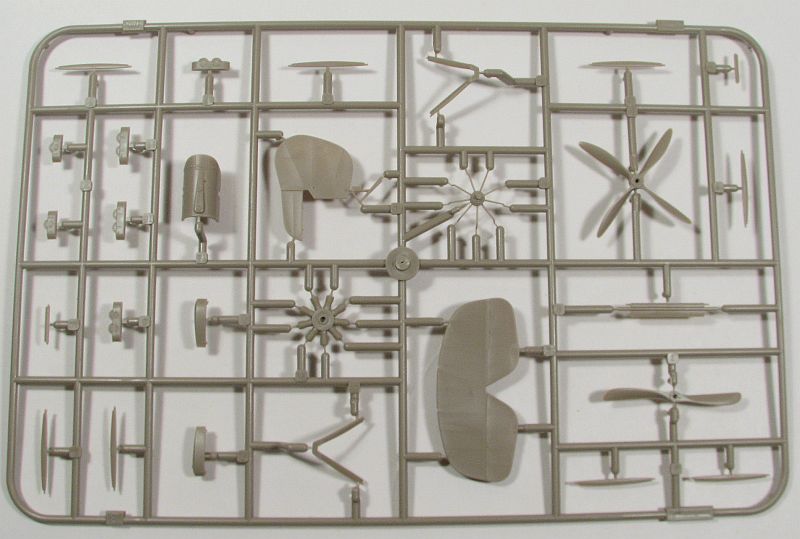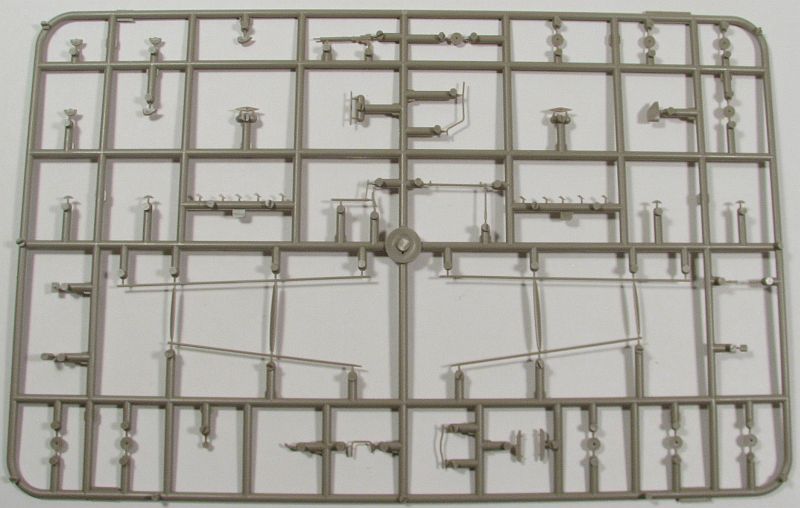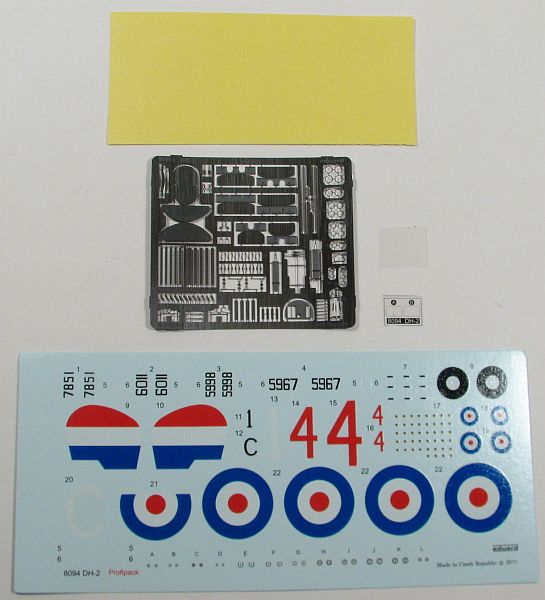Introduction
The Airco DH.2 was the second design by de Havilland for Airco that was also a pusher design. Since the British didn't have a working interrupter gear for a forward-firing machine gun, the next best thing was to put the engine behind the pilot, allowing him to have the gun along his line-of-sight.
It was a good design while it lasted, giving the Fokker aircraft a good run, but by the time the Albatros was introduced, the DH.2 was outmoded and already considered obsolete.
The Kit
The Eduard 1/48 AH.2 ProfiPACK (kit #8094)consists of 79 pieces of injected plastic, two pieces of clear film (used for the windscreens), a set of Eduard masks and a photoetch fret. There are some pieces on the sprue that aren't used in this release, most of those being superceded by the photoetch. There are markings for four aircraft:- Arthur Gerald Knight's DH.2 from 22 June 1916, marked as "6011" with the typical PC10 upper surfaces and Clear Doped Linen (CDL) undersides
- William G.S. Curphey's DH.2 that he flew in 1916, marked as "7851" with PC10/CDL, the diffrence being the CDL was also applied to the fabric areas of the fuselage
- Capt. John O. Andrew's DH.2 which he flew in 1916, marked as "5998" finished in the usual PC10/CDL, but this time the entire fuselage was painted PC10 including the metal areas
- Robert Henry Magnus Spencer Saundby's DH.2, flown in July 1916, finished overall mainly in CDL with a PC10 fin and red wheel covers
Once the main fuselage pieces are glued together than the upper rear is added, and construction continues. Next up is the engine which also has a lot of photoetch to add. Which is a good thing because the entire engine is out for the world to see. With the detail Eduard provides it will look stunning.
After the engine is assembeled then the upper wing is added with all the struts. To be honest if I were to build this I would paint the assemblies separate. The fuselage/lower wing, since it's one piece, the upper wing and then the rear booms. After painting would I bring it all together, including the landing gear.Where the patience will pay off is in the rigging. Since this is a "boomed" aircraft, you'll have all the "usual" rigging, plus what is needed between and amongst the booms. Quite the feet and it will probably take you a few modeling sessions to complete the rigging. Just be glad Eduard provides ample and complete rigging diagrams.
Conclusion
Definitely not for the beginning biplane builder, but once finished the Eduard 1/48 DH.2 will look stunning. You can see how Gabriel Stern built his a few years ago to get an idea of how it looks finished.My thanks to Eduard for the review kit.



